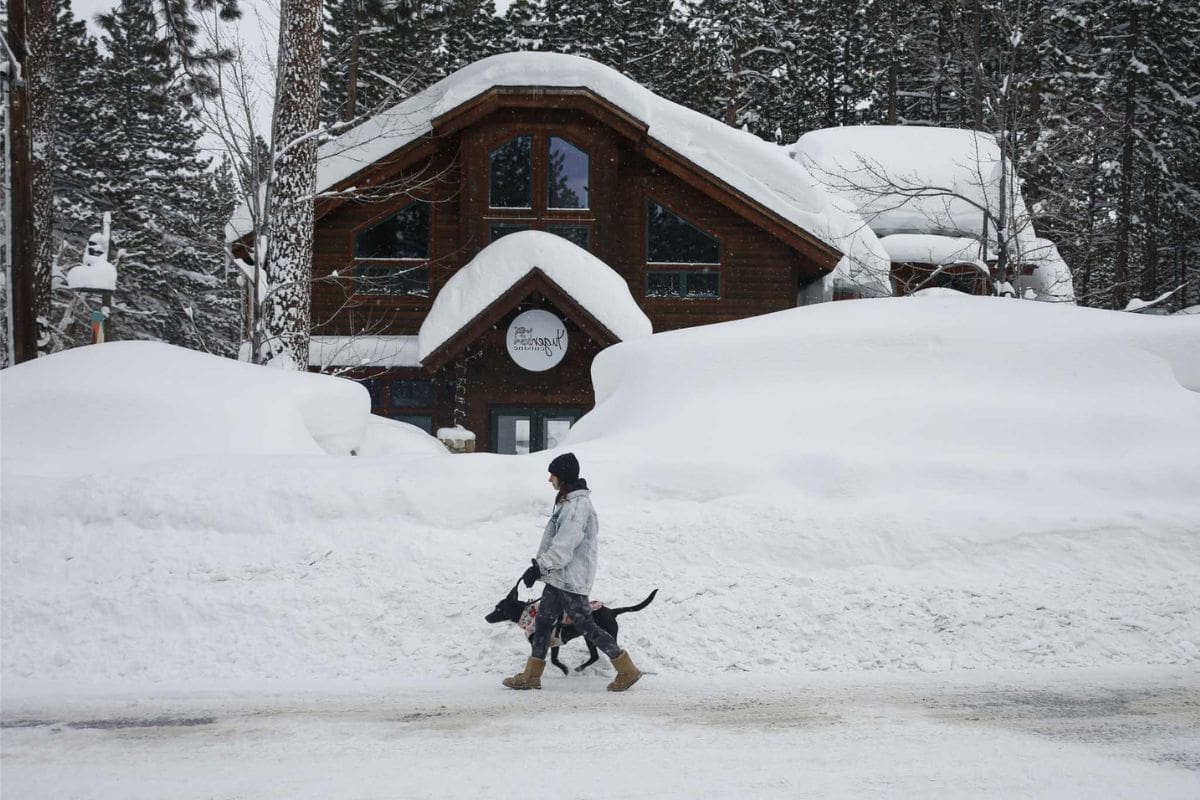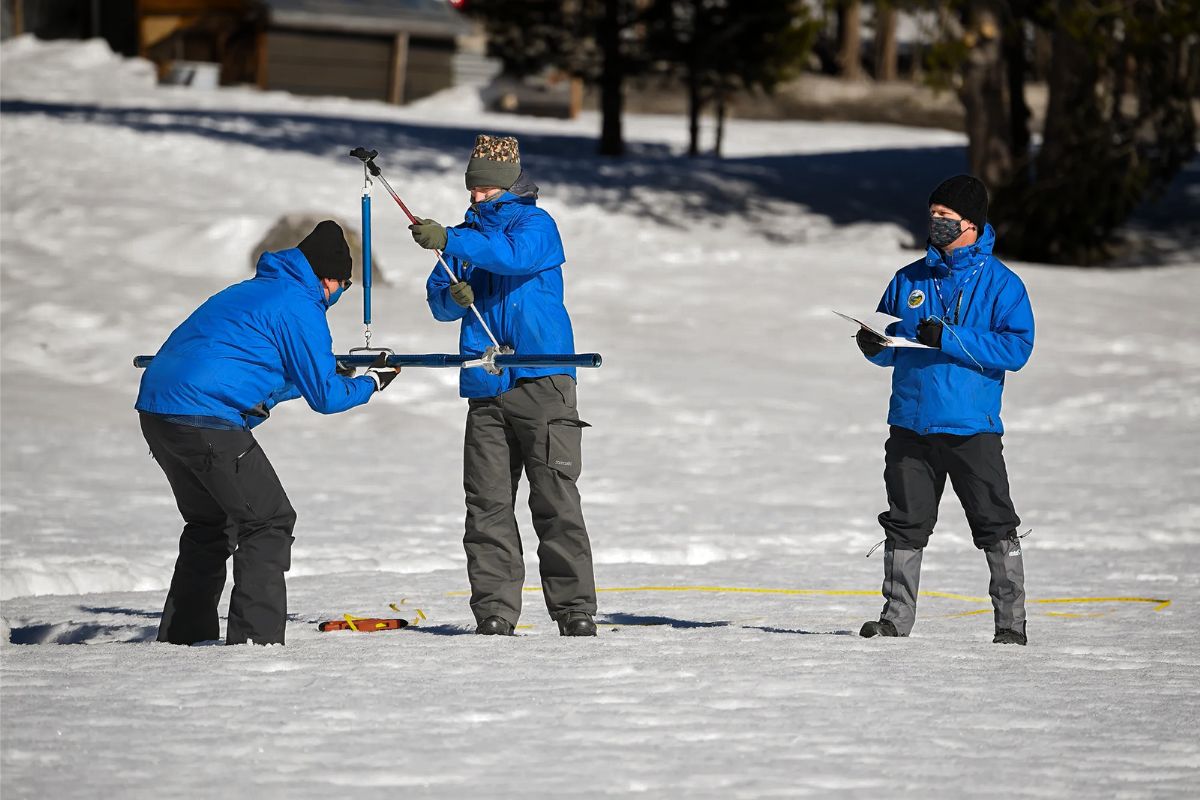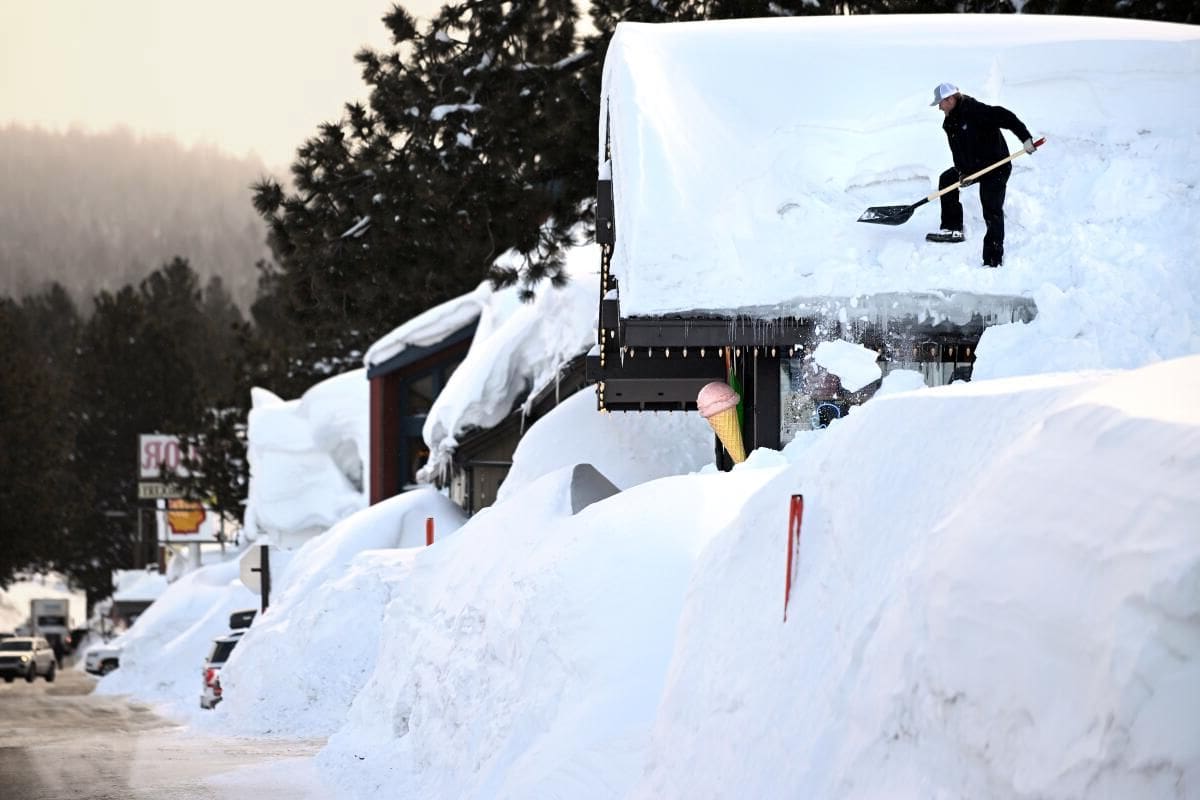Snowy Surprises in California: As the snowflakes dance their intricate waltz upon California’s mountains, you might find yourself captivated by the picturesque scenes they create. However, beneath this serene beauty lies a brewing storm of concerns. The recent snowy surprises bring joy and relief, but the looming threat of rapid snowmelt presents a sobering reality. Stay tuned to uncover the intricate dance between the snowpack’s delicate balance and the potential risks that lie ahead in the Golden State.
Key Takeaways
- Recent snowfall boosts California’s snowpack, but warmer temperatures pose a threat.
- Consistent snowfall is vital for water resources and managing potential flood risks.
- Communities must prepare for floods and implement effective management strategies.
- Sierra snowpack’s sustainability is crucial for water supply; conservation and management are imperative.
Current Snowpack Status
In California, you’ll be pleasantly surprised to learn that the current snowpack status reveals a promising 83% of median levels following a recent 13-inch snowfall in the Sierra Nevada. This significant boost in snow water level, as measured on Thursday, is a positive development that bodes well for the state’s water resources. The UC Berkeley Central Sierra Snow Lab scientists have attributed this increase directly to the recent snowfall, which has provided much-needed replenishment to the snowpack.
This level of 83% of median is a reassuring sign, indicating that California is in a better position compared to previous years. The Sierra Nevada plays a crucial role in storing water in the form of snow, which gradually melts and feeds into rivers and reservoirs during the warmer months. With this recent snowfall, there is hope for a more stable water supply in the region.
As you delve into the specifics of California’s snowpack status, it becomes evident that this recent snowfall has brought about a positive shift in the overall water outlook. The current levels offer a sense of relief and optimism, especially considering the importance of snowpack in sustaining water resources throughout the state.
Comparison with Last Year
Compared to the exceptional snow season of last year, this year’s snowfall in California is shaping up to be more average, signaling the importance of consistent snowfall for the region’s water resources. Last year’s extraordinary snow season saw California reaching 250-300% of the median snowpack, boasting a remarkable 63 feet of snow. However, H. Andrew Schwartz notes that the current season is on track for a more typical snowfall.
This comparison highlights the significance of steady snow accumulation for maintaining water resources in the region. The contrast between the two seasons serves as a reminder of the variability in California’s snow patterns and the impact it has on water supply, agriculture, and ecosystems. While last year’s abundance was a welcome relief, this year’s more moderate snowfall underscores the necessity of reliable snowpack to sustain California’s water needs throughout the year. It emphasizes the delicate balance required to manage water resources effectively in this region.
Potential Threat of Rapid Snowmelt
With the snow piling up steadily, the looming concern arises: will the rapid snowmelt pose a potential threat this year? As warmer temperatures continue to be a factor, the potential risk of rapid snowmelt increases, potentially leading to flooding like last year. Here are three key points to consider:
- Temperature Influence: Warmer temperatures can accelerate the melting process, causing a sudden influx of water that may overwhelm existing drainage systems.
- Snowpack Volume: The amount of snow currently accumulated plays a significant role. A rapid thaw of a substantial snowpack can result in significant water runoff.
- Historical Precedent: Last year’s early warming serves as a cautionary tale. It demonstrated how quickly conditions can change, emphasizing the need for proactive measures to mitigate flood risks.
Understanding the interplay between temperature, snowpack volume, and past events is crucial in assessing the potential threat of rapid snowmelt this year. Stay informed and prepared for any eventualities that may arise as the winter season progresses.
El Niño’s Influence and Flood Risk
Bearing in mind the potential impacts of El Niño weather patterns on California and the U.S., heightened concerns arise regarding the increased flood risk associated with higher temperatures. The upcoming El Niño is expected to bring warmer temperatures, which can accelerate snowmelt in the Sierra Nevada mountains. This rapid snowmelt poses a significant threat of flooding in low-lying areas and along rivers. Schwartz, an expert in the field, stresses the importance of preparation to manage the potential surge in river flows.
With higher temperatures fueling snowmelt, the risk of rivers overflowing their banks becomes more imminent. It is crucial for communities to be vigilant and take proactive measures to mitigate the impact of potential floods. As El Niño’s influence becomes more pronounced, the need for effective flood management strategies grows even more urgent. Stay informed and stay prepared for the challenges that higher temperatures and increased snowmelt can bring in the upcoming months.
Also Read: California Next Big Thing: Get Ready for Hydrogen Trains!
Critical Role of Sierra Snowpack
Unlock the key to California’s water supply by understanding the critical role of the Sierra snowpack. The Sierra snowpack plays a crucial role in providing approximately 30% of California’s water supply. To grasp its significance fully, consider the following:
- Primary Water Source: The Sierra snowpack acts as a primary water source for California, feeding rivers and reservoirs essential for agriculture, industries, and households.
- Temperature Management: Managing temperatures is vital. Sudden rises in temperature can cause rapid snowmelt, leading to potential flooding and challenges in water storage and distribution.
- Water Conservation: Efficiently utilizing the Sierra snowpack’s water is crucial. Conservation efforts, such as capturing snowmelt in reservoirs for gradual release, are vital for sustainable water management.
Understanding these aspects of the Sierra snowpack not only illuminates its significance but also underscores the need for strategic water resource management in California.
Conclusion Of Snowy Surprises in California
As the snow continues to pile up in California, the threat of rapid snowmelt looms large. With El Niño’s influence increasing flood risk, it’s crucial to monitor the Sierra snowpack closely. Stay informed and be prepared for potential challenges ahead. Keep an eye on the weather patterns and be ready to adapt to changing conditions. Stay safe and stay alert as we navigate through these snowy surprises in California!
Our Reader’s Queries
Why is having a big Sierra snowpack is critical for California?
Snowfall in the Sierra, Southern Cascades, and Trinity Mountains plays a crucial role in California, supplying almost one-third of the state’s water. A subpar snowpack not only threatens municipal and agricultural water sources but also poses risks to forest vitality and wildfire susceptibility.
How much of California water comes from snowpack?
The Sierra snowpack typically provides approximately 30% of California’s water.
Why can’t California get snow?
Given California’s predominantly Mediterranean climate and extensive coastline, regions along the coast are unlikely to experience snowfall. However, snow can surprise in desert areas within the state.
What is the biggest danger to California from climate change?
The report anticipates that wildfires, intensified by climate change, will persist as a significant challenge in California. In 2020, California witnessed 22 of the 50 largest U.S. wildfires, with the seven largest recorded since 2018, according to the report.




